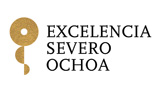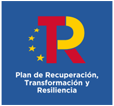Giuseppe Danilo Norata : “No cholesterol, no party”
Dr. Giuseppe Danilo Norata is a Full Professor of Pharmacology at the Department of Excellence of Pharmacological and Biomolecular Sciences, University of Milan
Dr. Giuseppe Danilo Norata is a Full Professor of Pharmacology at the Department of Excellence of Pharmacological and Biomolecular Sciences, University of Milan, Italy. He graduated in Pharmacy in 1996 and obtained his PhD in Experimental Medicine from the University of Siena in 2002. From 2002 to 2004, he completed a postdoctoral fellowship at the Karolinska Institute in Stockholm (Sweden). His research focuses on the molecular mechanisms involved in vascular and cardiometabolic diseases and their connection with immunometabolism from a translational perspective. He has published over 190 papers in the field of cardiovascular and immunometabolic diseases and has participated as a speaker and chairman at various international conferences. Additionally, he is the co-chair of the European Atherosclerosis Society (EAS) Congress Committee and a member of the Faculty of the International Atherosclerosis Research School and the European Working Group on Immunometabolism.
- What is your main area of research?
My main area is immunometabolism, an emerging research field that explores how cell metabolism influences immune cells. This area is exciting because it connects two branches of science: cellular metabolism, which biochemists studied extensively decades ago, and immune cell plasticity. My research focuses on cholesterol metabolism and sterol disorders, highlighting how they impact immune function.
- What are the key findings in this area?
There are three main topics that connect cholesterol metabolism with immune cell activation. The starting point is the understanding that atherosclerosis, a key research area at CNIC, is not just a consequence of increased plasma cholesterol. We now recognize that hypercholesterolemia actively drives inflammation and immune responses in the vessel wall.
- Is this a new concept, or are we just beginning to understand it better?
We've long known that atherosclerosis is an inflammatory disorder and that cholesterol is a key driver. Traditionally, cholesterol was understood to induce an inflammatory response in the bone marrow. However, we focus on the molecular mechanisms by which immune cells sense changes in cholesterol metabolism, altering their activation status. This knowledge extends beyond atherosclerosis, offering new therapeutic targets for cardiovascular and immune-related diseases. As a pharmacologist, I am particularly interested in molecular mechanisms that could lead to innovative treatments.
- Does this research open new opportunities for drug development?
Yes, and it extends beyond traditional cholesterol-lowering drugs. We already have highly effective medications that lower plasma cholesterol and reduce cardiovascular risk. However, I‘m exploring additional pathways linked to cholesterol metabolism that could provide novel pharmacological targets, beyond just lowering cholesterol levels.
Can we use vaccines or immune system manipulation to make immune cells resistant to cholesterol or lipoproteins?
That’s a tricky question. The phrase "No Cholesterol, No Party" suggests that elevated plasma cholesterol is the starting point for atherosclerosis. Prevention plays a crucial role, but cholesterol-related diseases are tricky because hypercholesterolemia is often silent until a major event, such as a heart attack, occurs. Unlike hypertension or diabetes, which have noticeable symptoms, high cholesterol is harder to detect without biochemical tests.
This is why early screening is essential, particularly for individuals with genetic predisposition. A key emerging concept is "primordial prevention," which emphasizes lifelong healthy habits from childhood, such as physical activity and a balanced diet. While these measures may seem basic, they are proving to be highly effective even in resource-limited settings.
Additionally, we now have effective drugs for primary prevention, such as statins, which are inexpensive and widely available. New pharmacological approaches, including PCSK9 inhibitors and bempedoic acid, offer further options, particularly for high-risk patients with familial hypercholesterolemia (FH). In severe cases, such as homozygous FH, patients can experience heart attacks as early as age 10 if left untreated, highlighting the need for early intervention.
- With poor dietary habits becoming more common, could we face a cholesterol epidemic in the coming decades?
This issue should be examined from two perspectives. Cholesterol itself is not always linked to poor diet; rather, an overall deteriorated lipid profile, including high triglycerides, is often associated with unhealthy eating habits.
Dietary patterns have changed dramatically in recent decades. A striking example is seen in FH patients. Previously, these individuals had high LDL cholesterol but normal triglyceride levels. Now, their children not only inherit FH but also exhibit hyperlipidemia and obesity due to poor diet. This shift is transforming cardiovascular diseases into broader cardiometabolic disorders, making prevention even more urgent.
- Cardiovascular disease is a global pandemic. Do we have enough drugs to treat everyone, and can national healthcare systems sustain the costs?
This is a critical challenge. Data from the Global Burden of Disease project show that cardiovascular disease remains the leading global cause of death, accounting for 18 million deaths annually, with 9 million due to ischemic heart disease. Hypercholesterolemia is a key contributor, alongside diabetes and other risk factors.
The challenge is that as life expectancy increases, patients accumulate multiple risk factors, requiring simultaneous treatment for different conditions. In the past, an elderly patient might have taken one or two medications. Now, many require multiple drugs for cholesterol, hypertension, and diabetes, increasing healthcare costs.
To manage this, we must adopt personalized medicine, targeting expensive new therapies for those who will benefit most. Advances in imaging and early detection of atherosclerosis will help guide treatment decisions, potentially reducing hospitalizations and overall costs. In Italy, for example, hospital expenses consume 85-88% of healthcare budgets, while only about 6% is spent on drugs. A small increase in drug spending could significantly reduce hospitalization costs, maintaining overall financial balance.
- What are the biggest challenges in cardiovascular research for the coming years?
Despite advances in managing cholesterol, diabetes, and triglycerides, patients still have residual cardiovascular risk. New factors, such as elevated lipoprotein(a) [Lp(a)], are emerging as significant risk contributors. Several drugs targeting Lp(a) are in advanced clinical trials.
Inflammation is another key issue. While anti-inflammatory drugs have shown benefits in reducing cardiovascular events, they can also increase infection risks. This creates a delicate balance, as inflammation plays a crucial role in immune defense. Future research must refine personalized approaches to minimize risks while maximizing benefits, especially for high-risk patients.
- What advice do you give to your students?
Primarily, resilience is key. A career in science is challenging, but passion and perseverance are essential. Funding opportunities vary by country, but good ideas, strong collaborations, and international networks can lead to success. I encourage my students to embrace discovery and innovation.
- Do you have any thoughts on the global political landscape and its impact on research?
I don’t have direct insights, but I believe Europe must focus on strengthening its research ecosystem. While U.S. scientists express concerns about funding, they continue to progress. In Europe, we should use this moment as an opportunity to enhance collaboration and investment in research. We need to come together and further enhance the quality of European research. This is already evident in several opportunities available at the European level, not only through specific funding calls. For instance, we have the ERA for Health grants, which are awarded to different European cities. Additionally, the European Union has recently agreed on a cardiovascular research agenda. Similar to what was done for oncology years ago, cardiovascular disorders will now be a key priority for European research in the coming years. This presents a unique opportunity to further elevate the quality of European research, from basic science to translational studies and clinical applications.
- Is this your first visit to this center?
Yes, this is my first time here. However, I was already familiar with many researchers by name, having met them at various conferences. This center has a long and distinguished history as a milestone in cardiovascular research in Spain, so it’s a pleasure to be here. I had the opportunity to engage in discussions with three researchers: Sancho (David), Vicente Andrés, and Carlos Perez Medina. They are working in three distinct fields, yet our conversations quickly led to interesting experimental discussions. It was insightful to exchange ideas, and I also had the chance to offer some suggestions. This kind of academic interaction is a valuable exercise in advancing research together.











